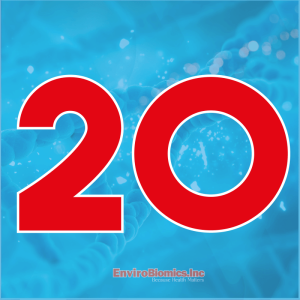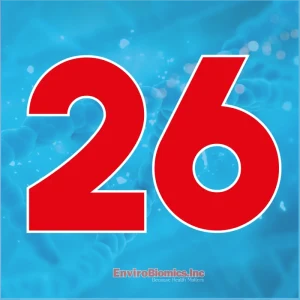Description
ERMI Background
The US Environmental Protection Authority developed ERMI to provide a straightforward, objective, sensitive and standardized way to assess mold and indoor air quality investigations. The USEPA developed the ERMI as a ranking system based on dust samples collected from homes, the ERMI will help predict the moldiness of homes.
Based on widely published data from EPA researchers and the 2006 HUD American Healthy Home Survey, the test has been developed as a tool to evaluate the potential risk of indoor mold growth and associated health effects to occupants. Upon purchasing the ERMI, you will get a HERTSMI -2 along with it.
In order to most effectively use this tool, the ERMI obtained needs to be compared to a national database. Indices were determined using this method for 1,096 homes across the U.S. as part of the 2006 HUD American Healthy Home Survey. Individual indices, ranked from lowest to highest were used to create a national Relative Moldiness Index (RMI) Scale.
In initial studies by the USEPA, the concentrations of different mold species in “moldy homes” (homes with visible mold growth or a history of water damage) and “reference homes” (homes with no visible mold) were compared. Based on those results, mold species were selected and grouped into those with higher concentrations in moldy homes (group 1) and those with lower concentrations (group 2). To calculate the ERMI the individual concentrations of the mold species detected are log-transformed and the sum of group 2 logs is subtracted from the sum of group 1 logs.
| ERMI = | | Sum of Log10 Group I | | minus | | Sum of Log10 Group II |
Below is a list of the mold species included in an ERMI report:
| Group 1: Water Damage Molds | Group 2: Common Indoor Molds |
| 1) Aspergillus flavus/oryzae | 27. Acremonium strictum |
| 2) Aspergillus fumigatus | 28. Alternaria alternata |
| 3) Aspergillus niger | 29. Aspergillus ustus |
| 4) Aspergillus ochraceus | 30. Cladosporium cladosporioides1 |
| 5) Aspergillus penicillioides | 31. Cladosporium cladosporioides2 |
| 6) Aspergillus restrictus | 32. Cladosporium herbarum |
| 7) Aspergillus sclerotiorum | 33. Epicoccum nigrum |
| 8) Aspergillus sydowii | 34. Mucor amphibiorum |
| 9) Aspergillus unguis | 35. Penicillium chrysogenum |
| 10) Aspergillus versicolor | 36. Rhizopus stolonifer |
| 11) Aureobasidium pullulans | |
| 12) Chaetomium globosum | |
| 13) Cladosporiumsphaerospermum | |
| 14) Eurotium (Asp.) amstelodami | |
| 15) Paecilomyces variotii | |
| 16) Penicillium brevicompactum | |
| 17) Penicillium corylophilum | |
| 18) Penicillium crustosum | |
| 19) Penicillium purpurogenum | |
| 20) Penicillium Spinulosum | |
| 21) Penicillium variabile | |
| 22) Scopulariopsis brevicaulis/fusca | |
| 23) Scopulariopsis chartarum | |
| 24) Stachybotrys chartarum | |
| 25) Trichodermaviride | |
| 26) Wallemia sebi |
ERMI Graph
This table assists in interpreting the graph
| Quartile | Zone | Percentage | ERMI Value | Relative Mouldiness |
| Q1 | Green | 25% of houses | Between -10 to -4 | Low Relative Mouldiness |
| Q2 | Amber | 25% of houses | Between -4 to 0 | Low to Medium |
| Q3 | Amber | 25% of houses | Between 0 to 5 | Medium to High |
| Q4 | Red | 25% of houses | Between 5 to 20 | High |
| Red | Greater than 20 | Very High |
Vacuum Sampling
EBI offers two methods for collecting dust samples. The original ERMI process used vacuum dust sampling where a special nozzle is fitted to a vacuum cleaner and allowed a sample of dust to be taken by masking off a 900 x 1800mm rectangle in the occupants living room and a similar area in the master bedroom. They are each vacuumed for 5 minutes to obtain a composite sample. One clear advantage of this test is that the carpet acts as a repository for the mold spores to collect over time. An issue that also occurs is that when a home has been water damaged the carpet may have been removed.
Swiffer Cloth Sampling
One clear limitation of ERMI vacuum sampling is that many homes do not have carpet, and many people who are susceptible to mold-related illness have chosen to have wooden or tiled floors. As a result, the “Swiffer Cloth Method” was developed. The important issue when sampling is that the procedure needs to collect dust that is representative of the area sampled, providing a sufficient quantity of dust so that the lab analysis can be successful.







Reviews
There are no reviews yet.